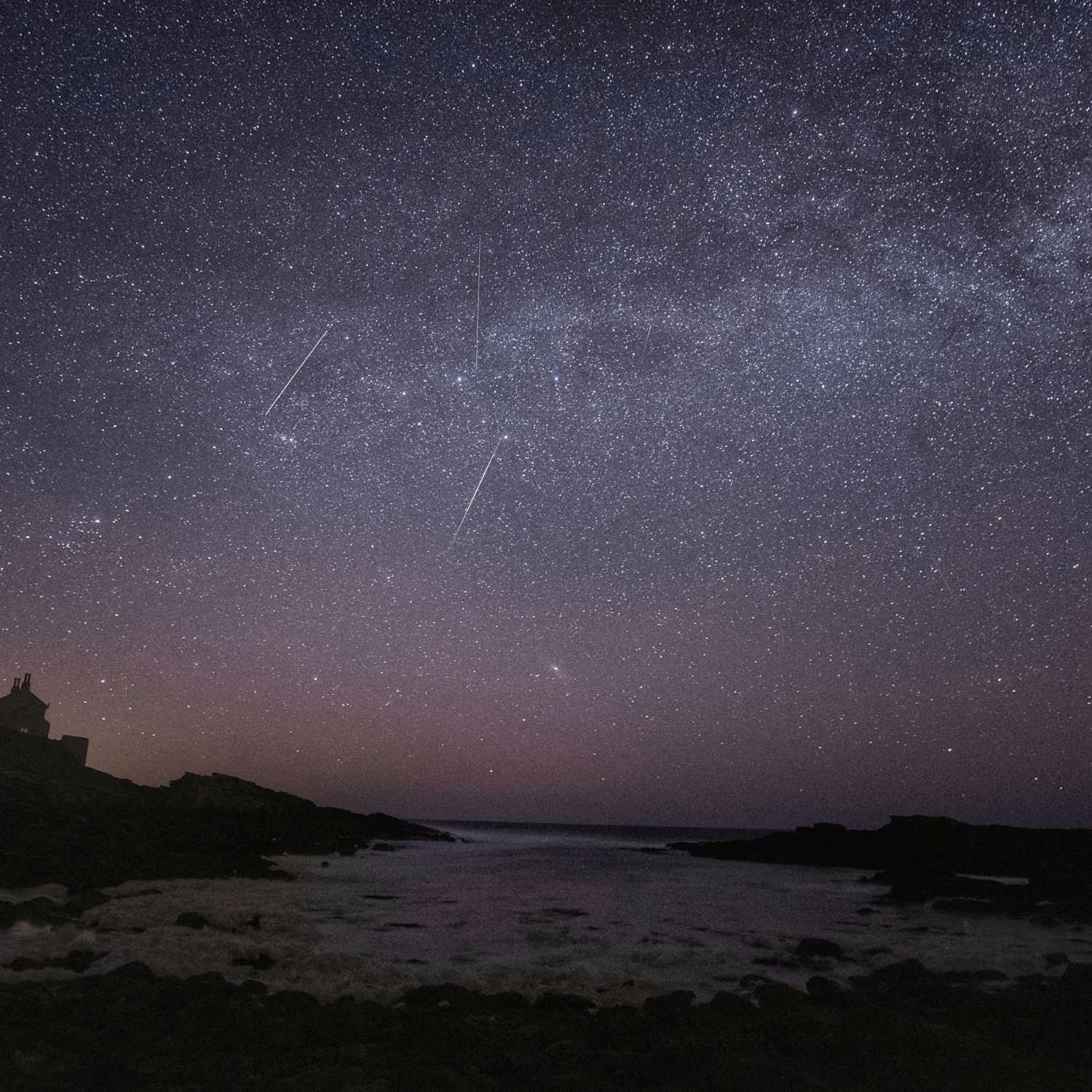You already know how essential it is to immerse yourself in the quiet and spacious plane of nature, away from the hyper-stimulation of contemporary life. When you stand at the threshold of something vast and untamed, you can’t help but see beyond yourself and experience a certain sense of awe.
One inexpensive and accessible way to experience that marvel is witnessing the upcoming Lyrid meteor shower, which can be seen from almost anywhere on the planet. Visible to the naked eye, the annual show usually occurs between April 16 and 25. This year’s shower is expected to peak between April 21 and 22 and occurs just after the , the lunar phase when the moon appears hidden. This means conditions will be especially dark and favorable to sighting meteors. Observers can typically catch an average of ten or more “shooting stars” per hour during this peak time.
What is a Meteor Shower?
A short science lesson may come in handy. A meteor shower occurs when the Earth passes through a stream of rocky debris left behind by a comet on its orbit around the Sun. These debris trails, known as meteoroid streams, are composed of tiny comet crumbs that can range from the size of a grain of sand to a small boulder. When these particles enter the Earth’s atmosphere, friction from the air generates heat and the particles combust, creating a shimmering display of “shooting stars.”
Because the Earth intersects the comet’s path, meteor showers are cyclical and occur at fairly regular intervals. They typically take the name of the constellation from which they originate. The Lyrids’ namesake constellation is Lyra, which is a small collection of stars that resembles a lyre, or an ancient musical instrument similar to a harp. (Although some would say the constellation more closely mimics a necktie made from a parallelogram attached to a triangle.)
Where to Watch the Lyrid Meteor Shower?
The only prerequisites for witnessing the Lyrid meteor shower are a cloudless night sky and minimal light pollution. Stargazers can expect to see meteors from nightfall through just before dawn. Allow about 30 minutes for your eyes to adjust to the dark before you face east and take in as wide an expanse of sky as possible. Gaze in the direction of Vega, the brightest star in the constellation Lyra. In northern latitudes, Lyra appears almost directly overhead around midnight this time of year. In the southern hemisphere, it appears lower in the northern sky.
Then simply look for a flash or a streak in the night sky.
Chances are you’ll be able to experience the Lyrids from your backyard, although you can increase the likelihood of sightings by distancing yourself from city lights and seeking out a , known for the protected nocturnal environment. The International Dark Sky Association provides for locating parks closest to you.
The following dark sky parks are among those that provide optimal viewing conditions:
- : Chihuahuan Desert, Texas
- Monroe County, Florida
- Moab, Utah
- Lone Pine, California
- : Alamosa County, Colorado
RELATED: How to Photograph Meteor Showers


